Cover
Copyright
Credits
About the Authors
About the Reviewers
www.PacktPub.com
Customer Feedback
Table of Contents
Preface
Chapter 1: Importing Spatial Data
Obtaining test data
Setting up the database
Importing flat data
Importing data using psql
Importing data interactively
Importing data non-interactively
Importing data using pgAdmin
Extracting spatial information from flat data
Importing shape files using shp2pgsql
shp2pgsql in cmd
The shp2pgsql GUI version
Importing vector data using ogr2ogr
Importing GML
Importing MIF and TAB
Importing KML
ogr2ogr GUI (Windows only)
Importing data using GIS clients
Exporting a shapefile to PostGIS using QGIS and SPIT
Exporting shapefile to PostGIS using QGIS and DbManager
Exporting spatial data to PostGIS from Manifold GIS
Importing OpenStreetMap data
Connecting to external data sources with foreign data wrappers
Connecting to SQL Server Spatial
Connecting to WFS service
Loading rasters using raster2pgsql
Importing a single raster
Importing multiple rasters
Importing data with pgrestore
Summary
Chapter 2: Spatial Data Analysis
Composing and decomposing geometries
Creating points
Extracting coordinates from points
Composing and decomposing Multi-geometries
Multi-geometry decomposition
Composing and decomposing LineStrings
LineString composition
LineString decomposition
Composing and decomposing polygons
Polygon composition
Polygon decomposition
Spatial measurement
General warning - mind the SRID!
Measuring distances between two geometries
Measuring the length, area, and perimeter of geometries
Line length
Polygon perimeter
Polygon area
Geometry bounding boxes
Accessing bounding boxes
Creating bounding boxes
Using bounding boxes in spatial queries
Geometry simplification
Geometry validation
Simplicity and validity
Testing for simplicity and validity
Checking for validity
Repairing geometry errors
Validity constraint
Intersecting geometries
Nearest feature queries
Summary
Chapter 3: Data Processing - Vector Ops
Primer - obtaining and importing OpenStreetMap data
Merging geometries
Merging polygons
Merging MultiLineStrings
Slicing geometries
Splitting a polygon by LineString
Splitting a LineString with another LineString
Extracting a section of LineString
Buffering and offsetting geometries
Offsetting features
Creating convex and concave hulls
Computing centroids, points-on-surface, and points-on-line
Reprojecting geometries
Spatial relationships
Touching
Crossing
Overlapping
Containing
Radius queries
Summary
Chapter 4: Data Processing - Raster Ops
Preparing data
Processing and analysis
Analytic and statistical functions
Vector to raster conversion
Raster to vector conversion
Spatial relationship
Metadata
Summary
Chapter 5: Exporting Spatial Data
Exporting data using \COPY in psql
Exporting data in psql interactively
Exporting data in psql non-interactively
Exporting data in PgAdmin
Exporting vector data using pgsql2shp
pgsql2sph command line
pgsql2shp gui
Exporting vector data using ogr2ogr
Exporting KML revisited
Exporting SHP
Exporting MapInfo TAB and MIF
Exporting to SQL Server
ogr2ogr GUI
Exporting data using GIS clients
Exporting data using QGIS
Exporting data using Manifold.
Outputting rasters using GDAL
Outputting raster using psql
Exporting data using the PostgreSQL backup functionality
Summary
Chapter 6: ETL Using Node.js
Setting up Node.js
Making a simple Node.js hello world in the command line
Making a simple HTTP server
Handshaking with a database using Node.js PgSQL client
Retrieving and processing JSON data
Importing shapefiles revisited
Consuming JSON data
Geocoding address data
Consuming WFS data
Summary
Chapter 7: PostGIS – Creating Simple WebGIS Applications
ExtJS says Hello World
Configuring GeoServer web services
Importing test data
Outputting vector data as WMS services in GeoServer
Outputting raster data as WMS services in GeoServer
Outputting vector data as WFS services
Making use of PgRaster in a simple WMS GetMap handler
Consuming WMS
Consuming WMS in ol3
Consuming WMS in Leaflet
Enabling CORS in Jetty
Consuming WFS in ol3
Outputting and consuming GeoJSON
Consuming GeoJSON in ol3
Consuming GeoJSON in Leaflet
Outputting and consuming TopoJSON
Consuming TopoJSON in ol3
Consuming TopoJSON in Leaflet
Implementing a simple CRUD application that demonstrates vector editing via web interfaces
WebGIS CRUD server in Node.js
WebGIS CRUD client
Layer manager
Drawing tools
Analysis tools - buffering
Summary
Chapter 8: PostGIS Topology
The conceptual model
The data
Installation
Creating an empty topology
Importing Simple Feature data into topology
Checking the validity of input geometries
Creating a TopoGeometry column and a topology layer
Populating a TopoGeometry column from an existing geometry
Inspecting and validating a topology
Topology validation
Accessing the topology data
Querying topological elements by a point
Locating nodes
Locating edges
Locating faces
Topology editing
Adding new elements
Creating TopoGeometries
Splitting and merging features
Splitting features
Merging features
Updating edge geometry
Topology-aware simplification
Importing sample data
Topology output
GML output
TopoJSON output
Summary
Chapter 9: pgRouting
Installing the pgRouting extension
Importing routing data
Importing shapefiles
Importing OSM data using osm2pgrouting
pgRouting algorithms
All pairs shortest path
Shortest path
Shortest path Dijkstra
A-Star (A*)
K-Dijkstra
K-Shortest path
Turn restrictions shortest path (TRSP)
Driving distance
Traveling sales person
Handling one-way edges
Consuming pgRouting functionality in a web app
Summary
Index
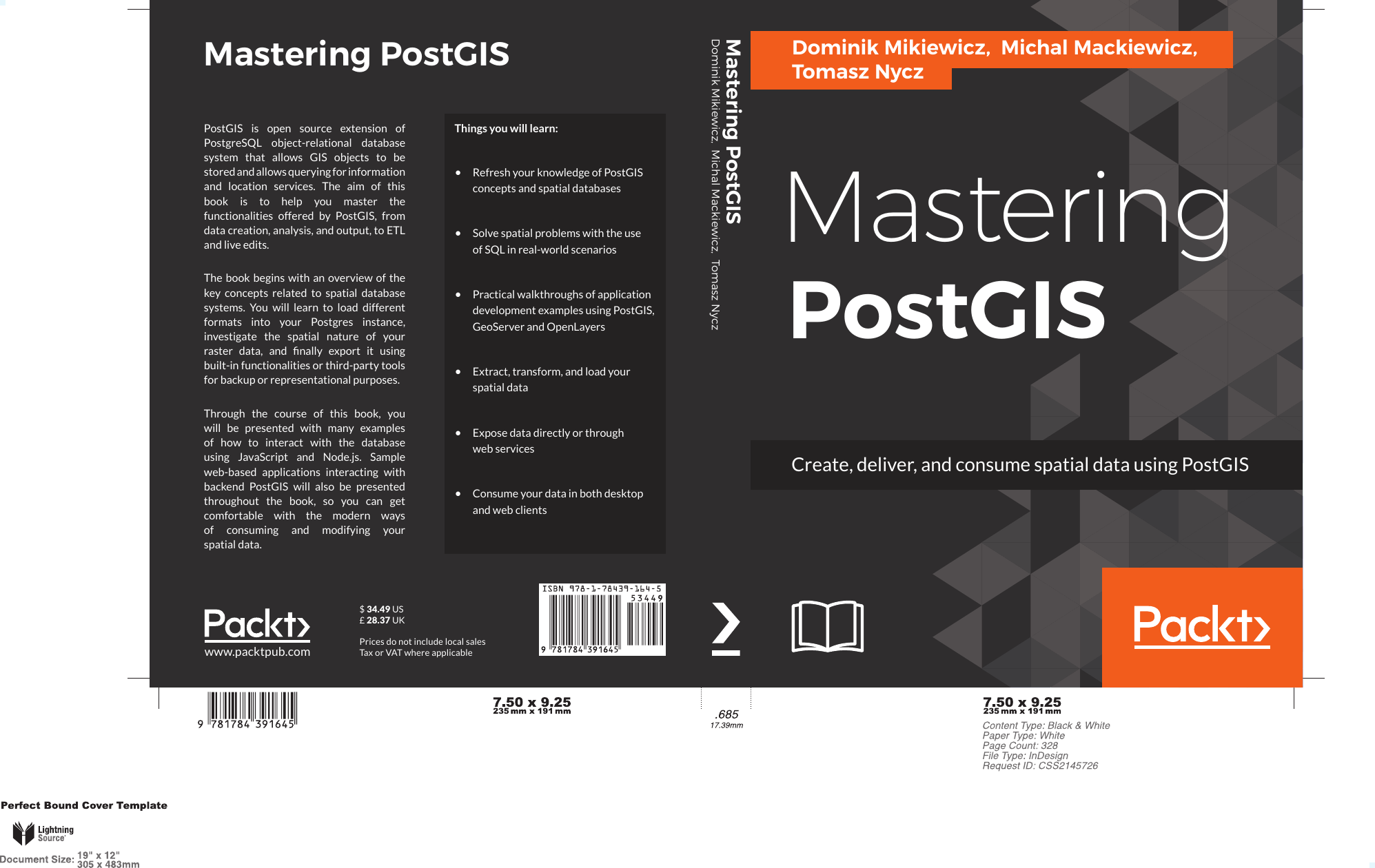
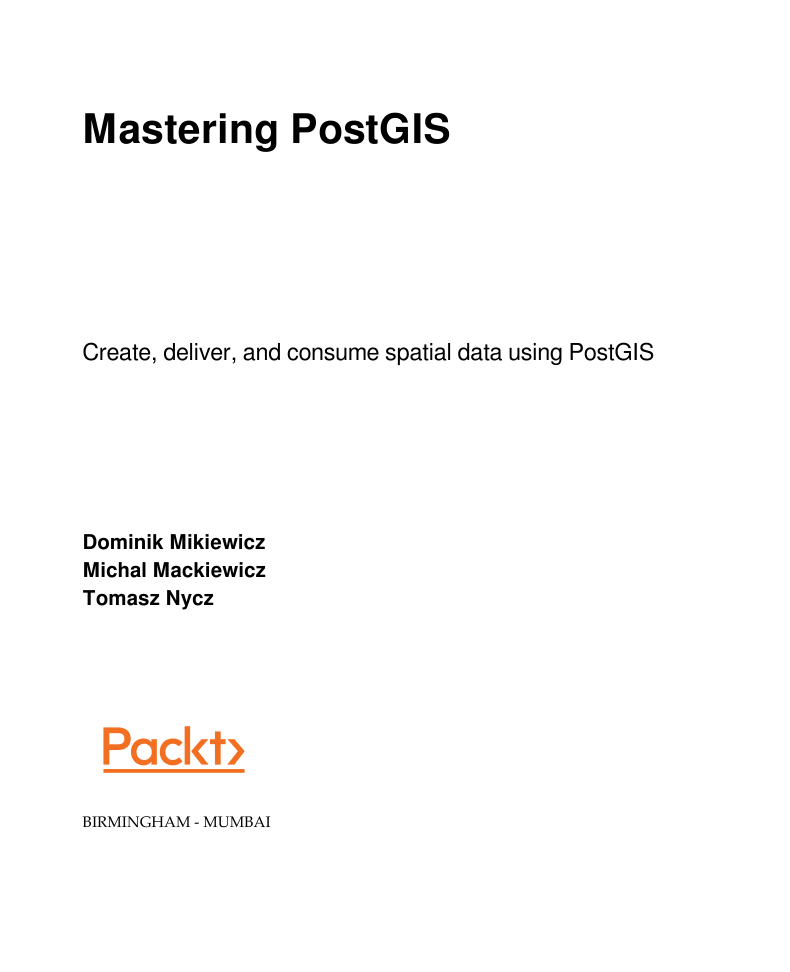
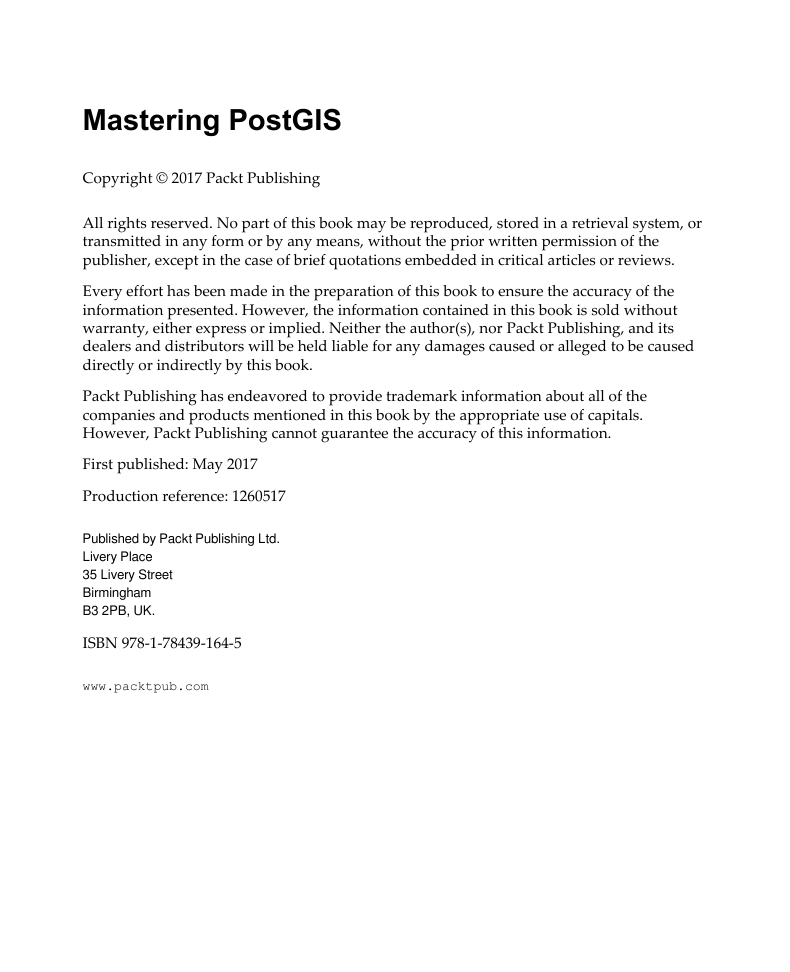
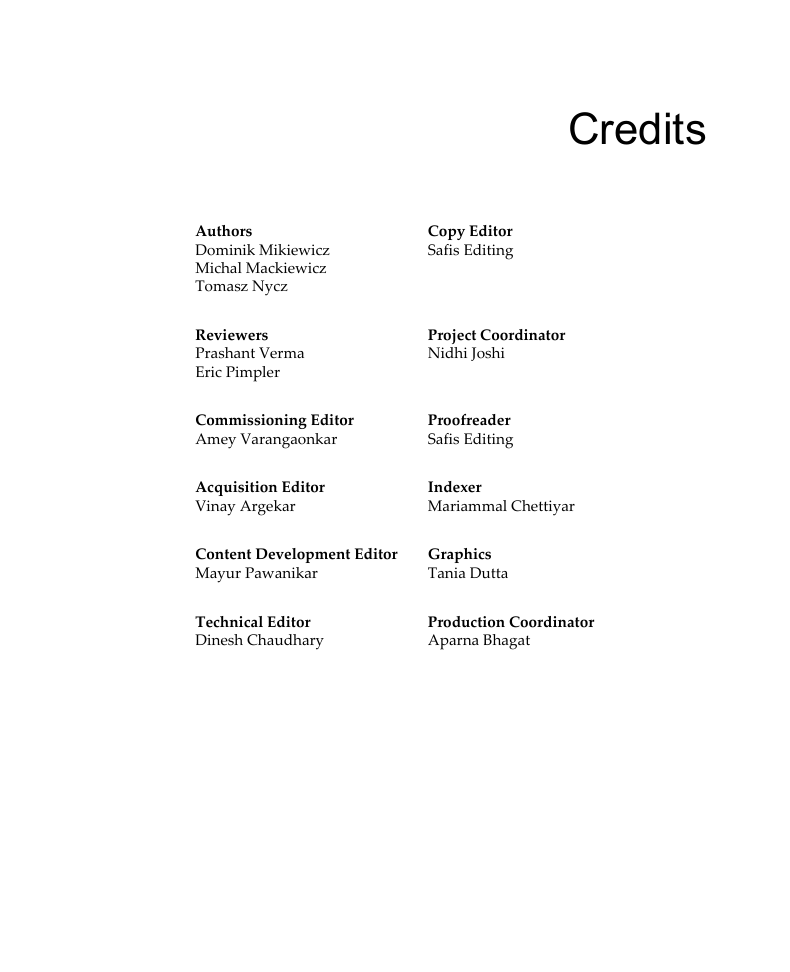

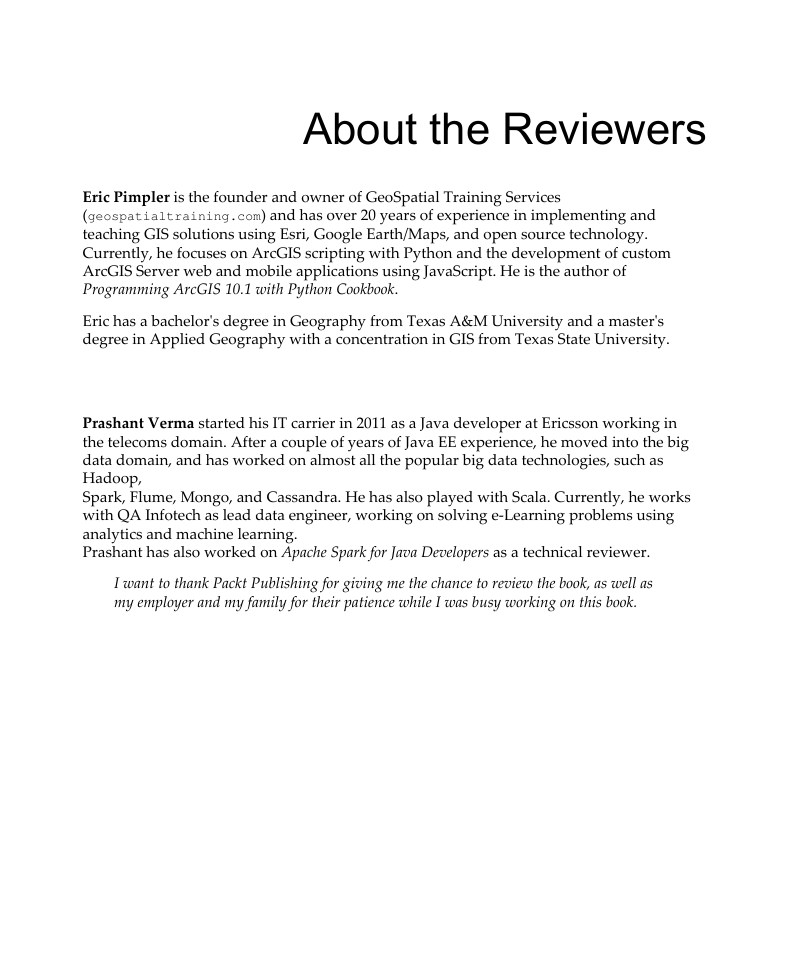
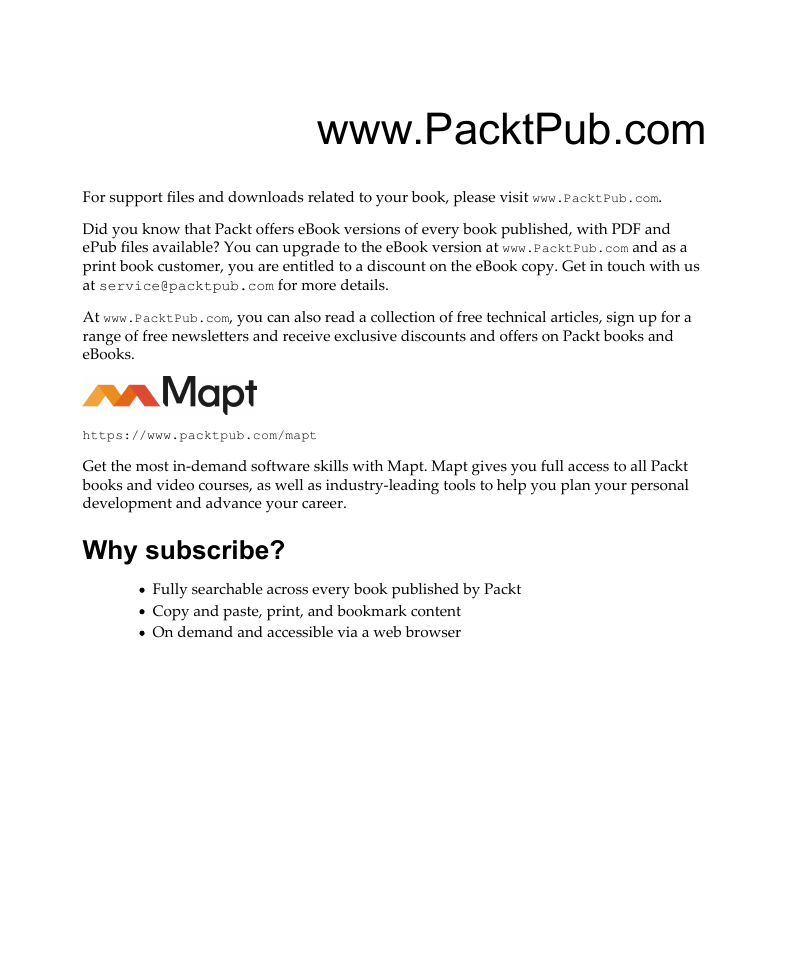









 2023年江西萍乡中考道德与法治真题及答案.doc
2023年江西萍乡中考道德与法治真题及答案.doc 2012年重庆南川中考生物真题及答案.doc
2012年重庆南川中考生物真题及答案.doc 2013年江西师范大学地理学综合及文艺理论基础考研真题.doc
2013年江西师范大学地理学综合及文艺理论基础考研真题.doc 2020年四川甘孜小升初语文真题及答案I卷.doc
2020年四川甘孜小升初语文真题及答案I卷.doc 2020年注册岩土工程师专业基础考试真题及答案.doc
2020年注册岩土工程师专业基础考试真题及答案.doc 2023-2024学年福建省厦门市九年级上学期数学月考试题及答案.doc
2023-2024学年福建省厦门市九年级上学期数学月考试题及答案.doc 2021-2022学年辽宁省沈阳市大东区九年级上学期语文期末试题及答案.doc
2021-2022学年辽宁省沈阳市大东区九年级上学期语文期末试题及答案.doc 2022-2023学年北京东城区初三第一学期物理期末试卷及答案.doc
2022-2023学年北京东城区初三第一学期物理期末试卷及答案.doc 2018上半年江西教师资格初中地理学科知识与教学能力真题及答案.doc
2018上半年江西教师资格初中地理学科知识与教学能力真题及答案.doc 2012年河北国家公务员申论考试真题及答案-省级.doc
2012年河北国家公务员申论考试真题及答案-省级.doc 2020-2021学年江苏省扬州市江都区邵樊片九年级上学期数学第一次质量检测试题及答案.doc
2020-2021学年江苏省扬州市江都区邵樊片九年级上学期数学第一次质量检测试题及答案.doc 2022下半年黑龙江教师资格证中学综合素质真题及答案.doc
2022下半年黑龙江教师资格证中学综合素质真题及答案.doc